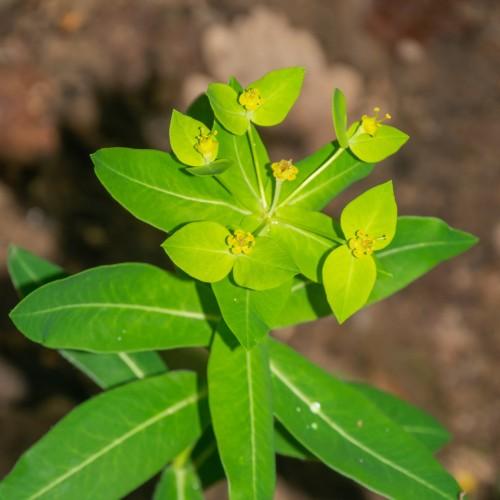
sweet spurge
Euphorbia dulcis
Cycle:
Herbaceous Perennial
Watering:
Minimum
Hardiness Zone:
5 - 8
Flowers:
Flowers In Summer
Sun:
Filtered shade, Full sun
Soil:
Well-drained
Fruits:
Fruits Ready In Summer
Growth Rate:
Moderate
Maintenance:
Low
Drought Tolerant:
Yes
Salt Tolerant:
Yes
Care Level:
Medium
watering
Sweet Spurge (Euphorbia dulcis) is a low maintenance, drought-tolerant plant that does best in well-draining soil. It requires little water and can survive periods of drought with minimal damage; however, regular watering is important for the plant's health. The best practice for watering Sweet Spurge is to give it a thorough watering once every 2 weeks. Drench the soil until it is saturated and then let it dry out before watering again. Decrease the frequency of watering during the winter months as the plant tends to be dormant at this time. Furthermore, Sweet Spurge does not tolerate overwatering and should not be left to sit in soggy soil or standing water.
sunlight
Sweet Spurge (Euphorbia dulcis) prefers full sun or light shade throughout the day. Six to 8 hours of direct sunlight per day is ideal for this plant species, but they can tolerate some shade. During the summer months, the plant should receive the majority of its daily sunlight in the morning and afternoon, and some shade in the middle of the day to prevent it from getting too scorched. In the warmer months of late spring, summer, and early autumn, the sweet spurge should receive no more than 2-3 hours of partial to full shade per day. In the winter months, the underside of the leaves may start to brown, indicating that the plant should receive more sunlight.
pruning
Sweet Spurge (Euphorbia dulcis) can be pruned in early to mid spring, before the new growth begins and just after flowering. Pruning should be done to remove any dead, damaged, or diseased wood and to keep the plant from becoming too large. To properly prune, cut the stems back to the desired size and shape, just above a healthy growth bud. Remove any stems that are growing too close together or are crossing over 1 another. When pruning, ensure that no more than 1/3 of the plant is removed in 1 session. This will help to keep the plant healthy and promote new growth.
